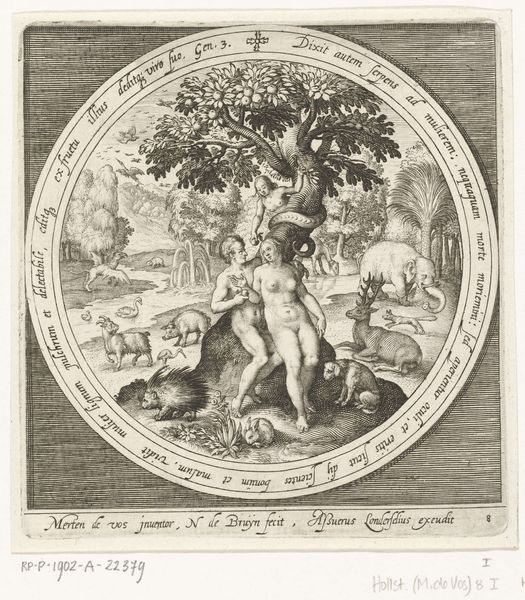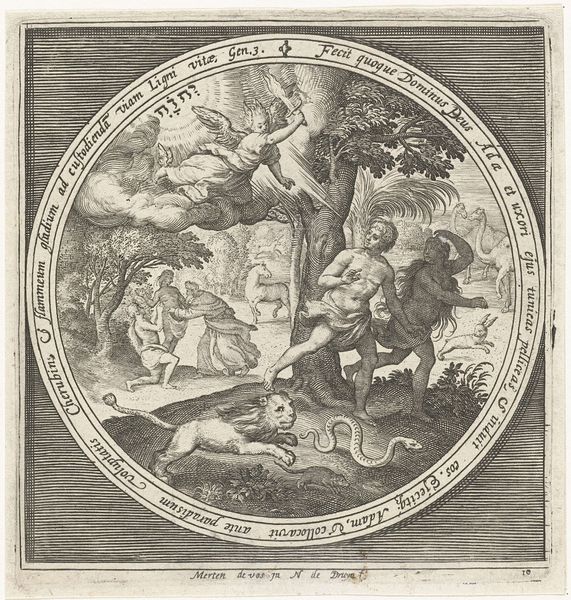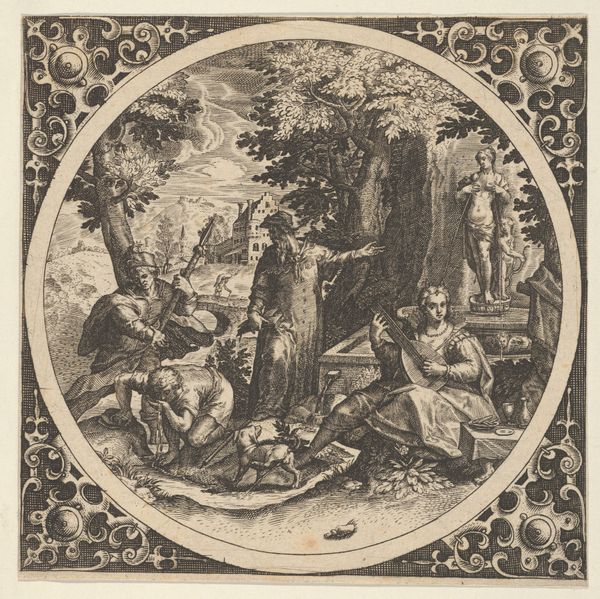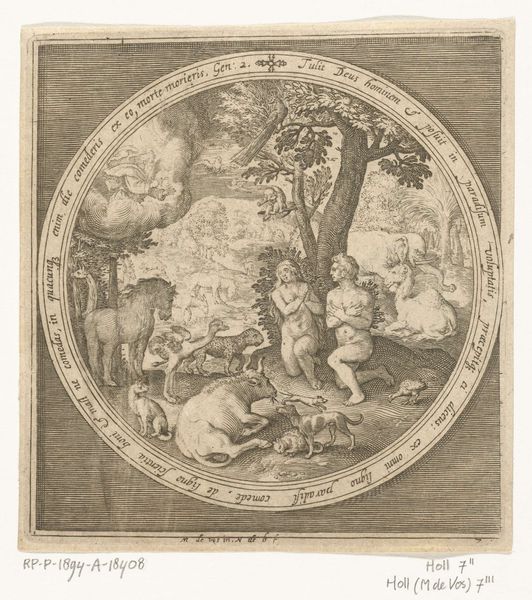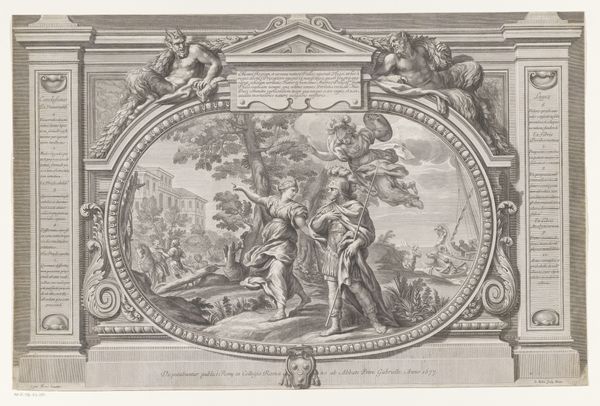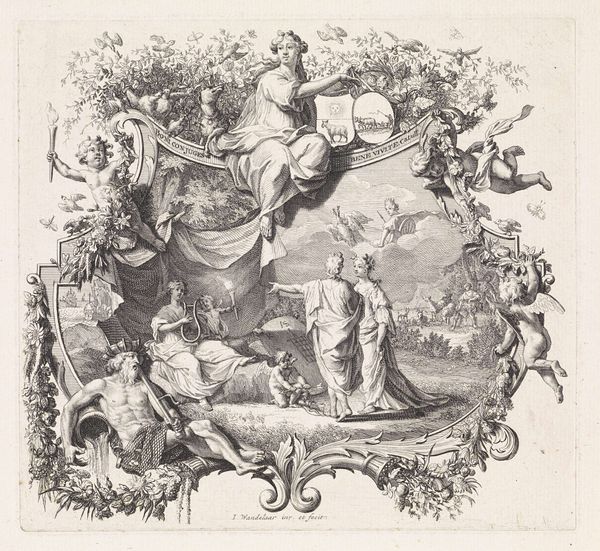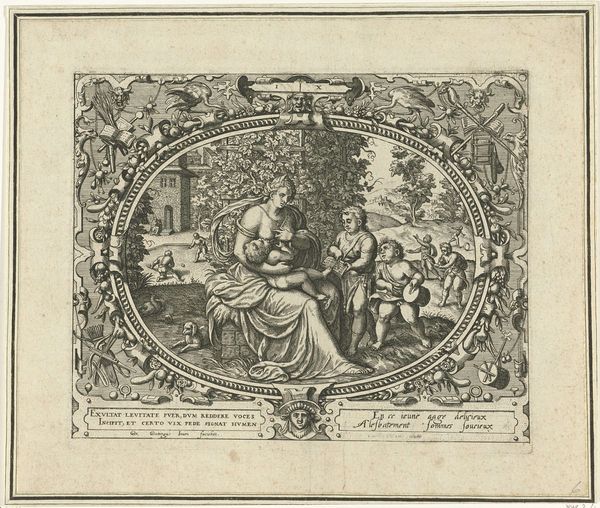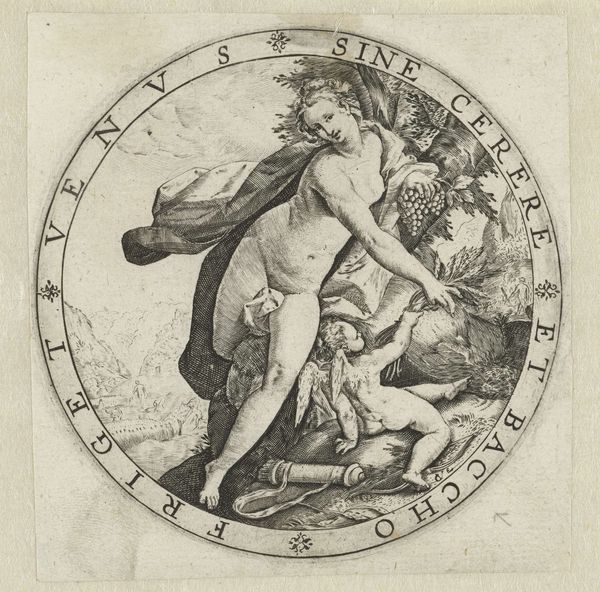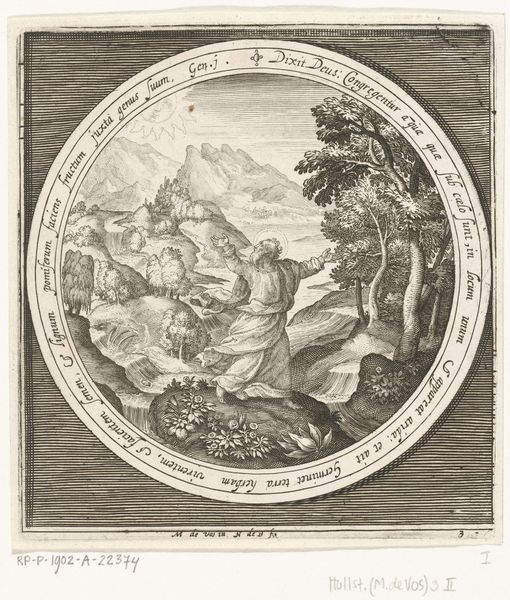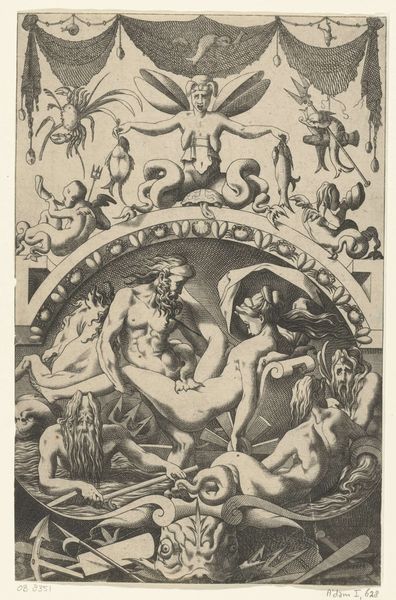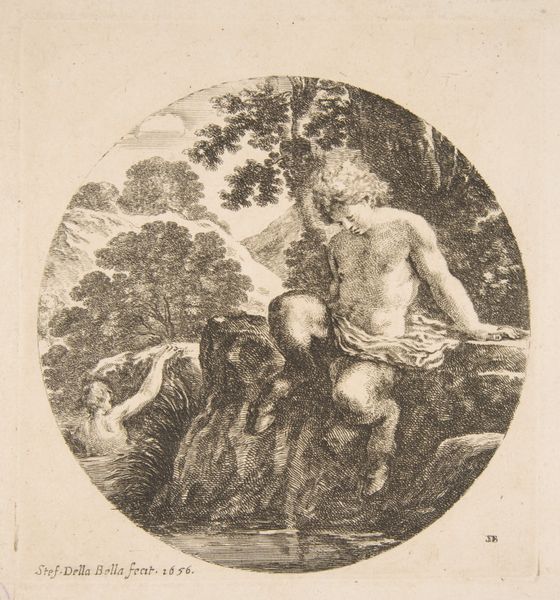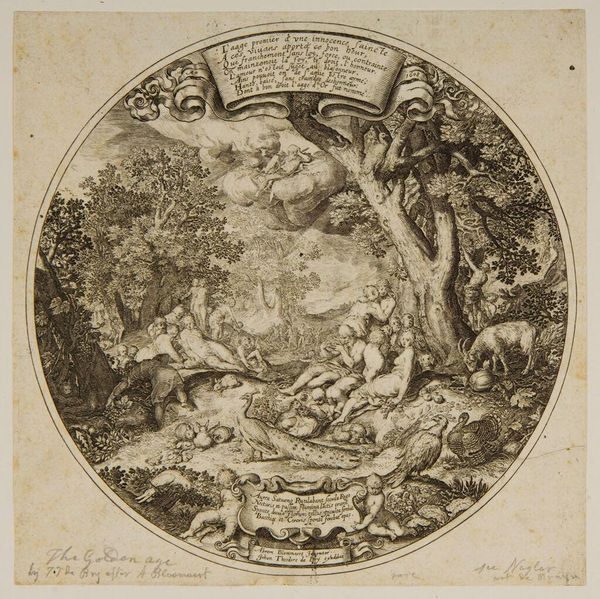
print, engraving
#
baroque
# print
#
landscape
#
figuration
#
line
#
history-painting
#
engraving
Dimensions: height 134 mm, width 122 mm
Copyright: Rijks Museum: Open Domain
Editor: Here we have Nicolaes de Bruyn's engraving, "Adam and Eve Hiding from God," dating somewhere between 1581 and 1656. I find the circular composition really striking; it almost feels like a lens focusing on this moment of shame. How do you interpret this work? Curator: That circular frame immediately makes me think about the cyclical nature of sin and redemption. Notice how the landscape shifts from lush paradise to something darker and more chaotic as we move from God above to Adam and Eve below. The image isn't just illustrating a biblical story, it is steeped in centuries of theological reflection. Editor: That's fascinating. I was so focused on Adam and Eve, I missed how much the environment contributes to the narrative. Curator: Exactly! The animals, seemingly oblivious, hint at the pre-Fall innocence lost. Consider, too, how the figure of God appears almost like a cloud formation—an embodiment of divine omnipresence, forever watching. The shame isn't just personal; it is a break within the entire cosmic order. Editor: The positioning of God in the clouds does feel less like a direct observation and more like an unavoidable fate, overseeing all the natural world. What's the weight of all of that Latin text around the edges? Curator: That is taken straight from Genesis and further enforces the historical weight. De Bruyn ensures this is not *a* Fall but *the* Fall. What did this add to your understanding? Editor: Understanding how the Garden of Eden imagery speaks to sin and change is really helpful for further explorations into engravings. I might go deeper into the role of God within landscapes next. Curator: I think understanding visual symbolism can inform the most critical cultural turning points!
Comments
No comments
Be the first to comment and join the conversation on the ultimate creative platform.
